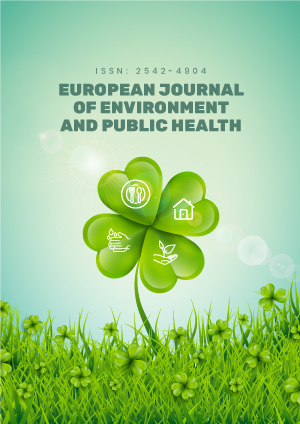Abstract
Hospital environment needs more attention because of the influx of people into the environment for medical checkup and other services. This study unveils the incidence of bacteria isolated from air and selected surfaces in three referral hospitals (City hospital, Federal Medical Centre, Wadata and Saint Theresa Hospital) in Makurdi Middle Belt Nigeria. Fifty (50) bacteria were isolated; hospital air (26%), bed rails (16%), door knobs (2%), floor (4%), nurse table top (10%), operation table (4%), sink (18%), stretchers (2%) and toilet seat (12%). In City Hospital, the bacteria isolated include Escherichia coli (6%), Pseudomonas aeruginosa (2%), Staphylococcus aureus and Staphylococcus spp (2%), from Federal Medical Centre, bacteria isolated were Klebsiella spp (10%), Staphylococcus aureus (4%), Staphylococcus spp (8%), Pseudomonas aeruginosa (12%) and E. coli (6%). In STH, bacteria isolated include E. coli (8%), Pseudomonas aeruginosa (4%), Staphylococcus spp (8%) and Staphylococcus aureus (14%). The invitro antibiotics susceptibility pattern shows that Pseudomonas aeruginosa showed highest resistant to the antibiotics while Klebsiella spp was susceptible to majority of the antibiotics but resistant to cloxacillin and erythromycin. The study reveals Klebsiella spp, Escherichia coli, Pseudomonas aeruginosa, S. aureus and other Staphylococcus spp as bacteria commonly associated with hospital environment. This study affirms the presence of resistant bacteria strains and highlighted world-wide problem of hospital borne infections as it concerns the study area and population. This report will create awareness and be a good guide to health care workers, patients and the public about the likeliness of contracting nosocomial infection and how to treat such infection. Major recommendations offered suggests that, healthcare workers should be more careful in carrying out their duty to avoid chance of being infected in the course of their work. Also, the in-vitro antibiotics susceptibility testing on the bacterial pathogens in the study will assist the clinicians in making improvement on the management of nosocomial infections.
License
This is an open access article distributed under the Creative Commons Attribution License which permits unrestricted use, distribution, and reproduction in any medium, provided the original work is properly cited.
Article Type: Research Article
EUR J ENV PUBLIC HLT, Volume 4, Issue 2, 2020, Article No: em0056
https://doi.org/10.29333/ejeph/8454
Publication date: 06 Aug 2020
Article Views: 4048
Article Downloads: 3268
Open Access References How to cite this article
 Full Text (PDF)
Full Text (PDF)